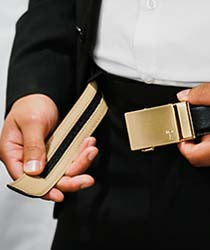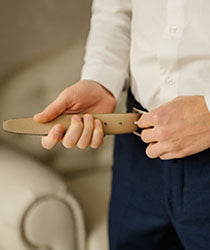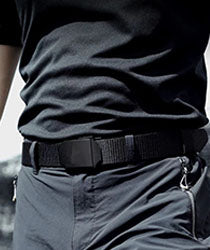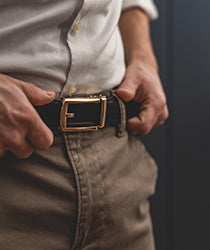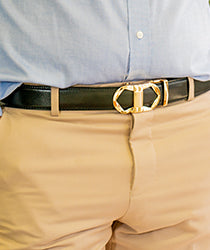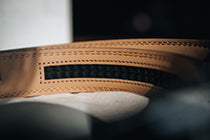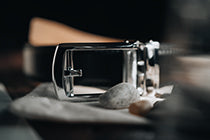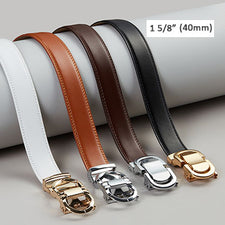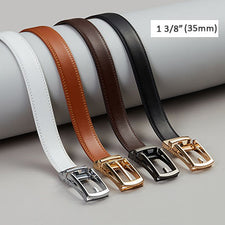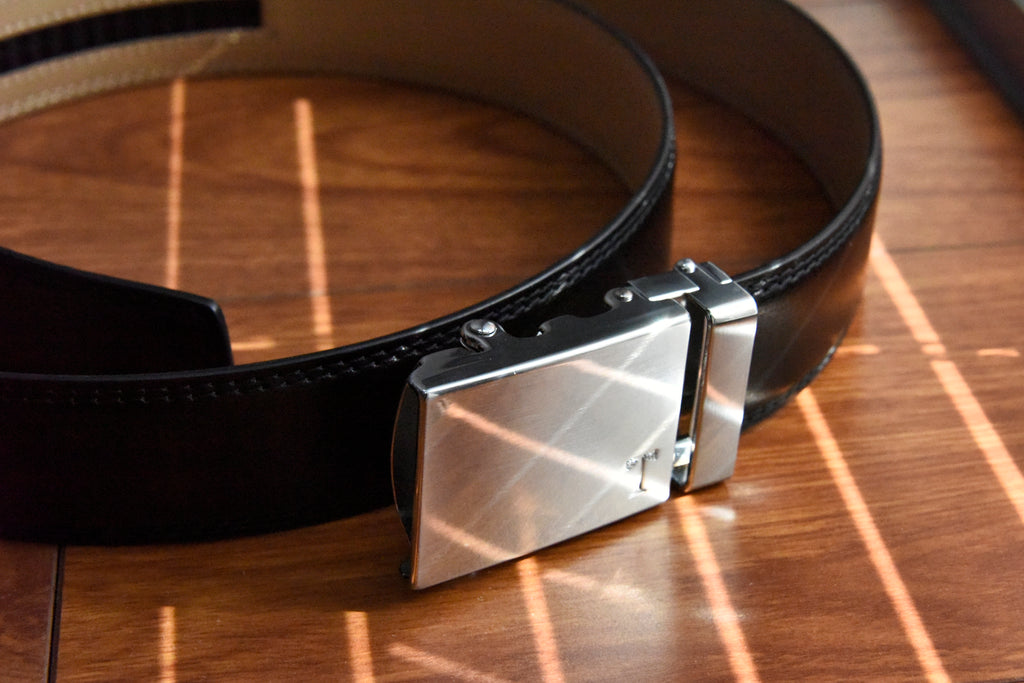
Belts have become one of the most important fashion and dressing-up accessories. I believe that those who enjoy wearing belts strongly feel that belts will always come with huge and small issues after a period of use. Long-term tugging and bending, particularly with various leather material belts, can result in wrinkles, paint peeling off the buckle, dry deformation, and even separating leather layers from the adhesive. With an increasing number of belts in the closet, knowing how to care for them properly becomes a concern. If we wait until then to realize the gravity of the situation, we may have to pay the price for our negligence once more.
Is there any simple solution that will allow us to provide practical care at home?
In truth, there are some methods to extend the belt's life. It's not only simple and effective, but it's also cost-efficient. Hurry up and learn!
Hang Your Belt UpAfter each use, remember to hang your belt up or, at the very least, try to store it flat.It is generally proved that allowing your leather belt to "rest" makes it more durable. This simple procedure is always the most effective approach to safeguard your belt. We often overlook this.
Don't be a slacker from today onwards.
The suggestion is to avoid crushing or bending your belt. Otherwise, the problem of creasing may appear soon. The most common thing we do, for example, wraps the belt over the loop for storage, but this would adversely aggravate the belt tension. The belt may quickly appear creases and splits in a short time. You can also look at our former article on this website that already summarized how to keep belts.
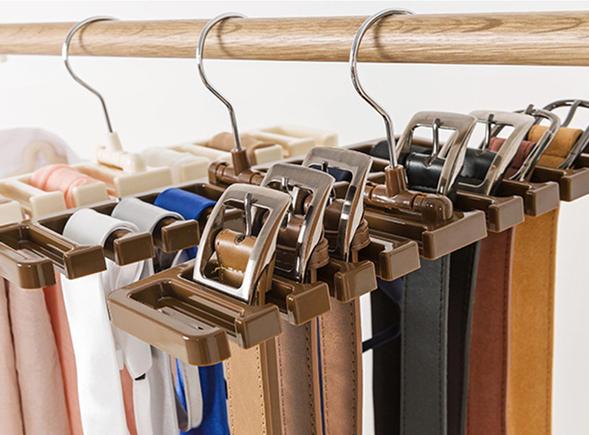
It's important to take good care of our belts. Like the necessary polish for your leather shoes, you also need to keep belts often soft and shiny. In addition to the level of usage, daily maintenance can determine 70 percent of a belt's condition. Leather loses its natural oils and flexibility with time, resulting in dryness and cracking. As a result, daily maintenance is required. In a word, there are totally three steps of the procedure: washing, nourishing and polishing.
We highly recommend using some specialized leather care products, such as leather cleaner, soft brush, polishing oil, leather conditioner, and leather care hand-mask (which only requires you to put it on and simply wipe the belt). Before using any of these products, you’d better test the product on the inside of the belt and then use it on the entire belt after confirming.
Don't Underestimate the Importance of StorageFor belts that may need to be stored for a while, we advise giving them a thorough cleaning and maintenance first. Providing them with a breathable dust bag would be excellent packaging to ensure the belts are in a dry and ventilated environment.
4 DONT'SWe need to pay close attention to the following actions that are "enemies" of belts:
1. No machine washing:Don't machine wash your belt with other clothes. Machine washing is a robust cleaning method that can damage leather items. You might also be more cautious when washing other clothes. We believe you can do it better.
2. No contact with acid or alkali:We must avoid acid and alkali whenever we wear the leather belt. Juice, milk, coffee, strong tea, other beverages, high-temperature liquids, and industrial grease types should all be avoided. They must be wiped dry as quickly as possible after being contacted; otherwise, they will cause the color to fade.
3. No exposure to sunlight:If you clean the belt yourself, be sure to hang it up to dry. Never hang it up to dry in a place with direct sunlight. Sunlight can cause excessive drying, color loss, distortion, and even cracking of the leather. I'm sure you don't want it to happen. As the raw materials for belts are from animal skins, the proteins and fibers they contain can make them susceptible to moisture or mildew. So, in addition to daily attention to keep the leather gleaming, try to keep the belt away from filth and dampness; these are often the primary enemies of excellent leather!
4. Dry cracking:This is the most ignored issue. Always keep in mind to keep your belt dry after every cleaning. Also, you must not use water or gasoline on top of your current belt to repair it. Instead, this action causes the leather to react chemically, resulting in a more extreme case of dry cracking.

If your belt is already wrinkled, try ironing it through a layer of cloth at 60–70 degrees Celsius; if it is accidentally stained with other colors, wipe it down with a one-to-one mixture of 95 percent alcohol and water.
However, if the condition does not improve, we advise you to seek additional expert assistance. Professional leather restoration services are now available in many shops.
Preventing Cracking of GlueWe'd better buy belts with binding stitch craft on the edge when buying. This is the best way to avoid the problem of peeling leather to the greatest extent. Many of the belts that have abandoned the binding stitch craft for the sake of design and aesthetics will inevitably come off. If you already have this issue, consider adding a stitch.
DIY Hole PunchingIf you prefer to punch your own belt holes, measure the hole distance first and then place them in sequence. Varying brands and styles of belts will always have different hole distances. Determining the point position ahead of time will subsequently save you a lot of time and trouble. After punching, apply a layer of leather care oil to the hole's edge for extra beauty and fastness. In general, you should punch no more than 2-3 extra holes. The appearance will be harmed if there are too many holes. Of course, if the belt is really long, we propose cutting it straight across or opting for a handier automatic buckle type belt.
Hope these suggestions will be valuable to you!

